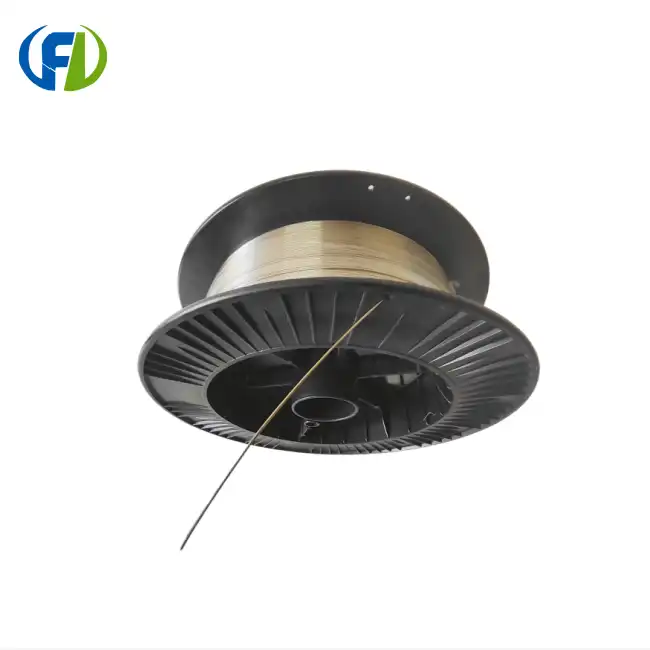- English
- French
- German
- Portuguese
- Spanish
- Russian
- Japanese
- Korean
- Arabic
- Greek
- German
- Turkish
- Italian
- Danish
- Romanian
- Indonesian
- Czech
- Afrikaans
- Swedish
- Polish
- Basque
- Catalan
- Esperanto
- Hindi
- Lao
- Albanian
- Amharic
- Armenian
- Azerbaijani
- Belarusian
- Bengali
- Bosnian
- Bulgarian
- Cebuano
- Chichewa
- Corsican
- Croatian
- Dutch
- Estonian
- Filipino
- Finnish
- Frisian
- Galician
- Georgian
- Gujarati
- Haitian
- Hausa
- Hawaiian
- Hebrew
- Hmong
- Hungarian
- Icelandic
- Igbo
- Javanese
- Kannada
- Kazakh
- Khmer
- Kurdish
- Kyrgyz
- Latin
- Latvian
- Lithuanian
- Luxembou..
- Macedonian
- Malagasy
- Malay
- Malayalam
- Maltese
- Maori
- Marathi
- Mongolian
- Burmese
- Nepali
- Norwegian
- Pashto
- Persian
- Punjabi
- Serbian
- Sesotho
- Sinhala
- Slovak
- Slovenian
- Somali
- Samoan
- Scots Gaelic
- Shona
- Sindhi
- Sundanese
- Swahili
- Tajik
- Tamil
- Telugu
- Thai
- Ukrainian
- Urdu
- Uzbek
- Vietnamese
- Welsh
- Xhosa
- Yiddish
- Yoruba
- Zulu
Application of Tantalum Wire in Electronic Industry
In the ever-evolving world of electronics, manufacturers are constantly seeking materials that can enhance performance, reliability, and miniaturization. One such material that has gained significant traction is tantalum wire. This remarkable metal, known for its unique properties, has become an indispensable component in various electronic applications. Let's delve into the world of tantalum wire and explore its crucial role in shaping the future of the electronic industry.

Tantalum wire properties for high-reliability electronic components
Tantalum wire boasts an impressive array of properties that make it ideal for use in high-reliability electronic components. Its exceptional corrosion resistance, high melting point, and excellent ductility contribute to its widespread adoption in the industry. These characteristics ensure that electronic devices incorporating tantalum wire can withstand harsh environments and maintain optimal performance over extended periods.
One of the most notable features of tantalum wire is its ability to form a stable oxide layer. This natural oxide coating acts as an insulator, preventing current leakage and enhancing the overall reliability of electronic components. The stability of this oxide layer is particularly crucial in capacitors, where tantalum wire serves as an anode material.
Moreover, the high melting point of tantalum wire (approximately 3017°C) allows it to maintain its structural integrity even under extreme temperatures. This property is invaluable in applications where electronic components are subjected to high heat, such as in aerospace and automotive industries.
The ductility of tantalum wire enables manufacturers to draw it into extremely fine diameters, sometimes as thin as a few micrometers. This malleability facilitates the production of compact electronic components, contributing to the ongoing trend of miniaturization in the electronics industry.
Another significant advantage of tantalum wire is its biocompatibility. This unique property has led to its use in medical electronic devices, where it can safely interface with human tissue without causing adverse reactions. From pacemakers to cochlear implants, tantalum wire plays a vital role in advancing medical technology.
How does tantalum wire enhance semiconductor performance?
The semiconductor industry has witnessed remarkable advancements in recent years, and tantalum wire has played a pivotal role in this progress. Its application in semiconductor manufacturing processes and devices has significantly enhanced performance and reliability.
In the realm of integrated circuits, tantalum wire serves as an excellent diffusion barrier. When used as a thin film between silicon and copper interconnects, it prevents the migration of copper atoms into the silicon substrate. This barrier property is crucial in maintaining the integrity and performance of modern high-speed processors and memory devices.
Tantalum wire also finds application in the fabrication of gate electrodes in metal-oxide-semiconductor field-effect transistors (MOSFETs). The high work function of tantalum makes it an ideal material for this purpose, allowing for better control of threshold voltage and reducing leakage current in these essential semiconductor devices.
Furthermore, the use of tantalum wire in semiconductor packaging has revolutionized the industry. Its low coefficient of thermal expansion, combined with excellent thermal conductivity, makes it an ideal material for heat sinks and thermal management solutions in high-power semiconductor devices. This application has enabled the development of more powerful and efficient electronic systems while maintaining optimal operating temperatures.
In the realm of optoelectronics, tantalum wire has found its niche in the production of high-performance light-emitting diodes (LEDs). When used as an electrode material, it enhances the electrical and optical properties of LEDs, resulting in improved brightness and efficiency. This application has far-reaching implications in display technologies and solid-state lighting solutions.
The semiconductor industry also benefits from tantalum wire's resistance to chemical attack. In processes involving aggressive chemicals, such as plasma etching or chemical vapor deposition, tantalum wire components demonstrate exceptional durability. This resistance to corrosion ensures the longevity and reliability of semiconductor manufacturing equipment, ultimately contributing to higher yields and reduced production costs.
Precision tantalum wire in microelectronic circuitry
The field of microelectronics has been revolutionized by the integration of precision tantalum wire in various applications. Its unique properties make it an ideal material for creating intricate and reliable microelectronic circuits.
One of the most significant applications of tantalum wire in microelectronics is in the production of thin-film resistors. These resistors, created by depositing a thin layer of tantalum on a substrate, offer superior stability and precision compared to traditional resistor materials. The ability to fine-tune the resistance value by controlling the thickness and geometry of the tantalum film allows for the creation of highly accurate and reliable electronic components.
Tantalum wire also plays a crucial role in the fabrication of microelectromechanical systems (MEMS). These miniature devices, which combine mechanical and electrical components on a microscopic scale, benefit from tantalum's excellent mechanical properties and chemical stability. From accelerometers in smartphones to pressure sensors in automotive systems, tantalum wire-based MEMS devices are pushing the boundaries of what's possible in microelectronics.
In the realm of high-frequency electronics, tantalum wire has found its niche in the production of surface acoustic wave (SAW) devices. These components, used in filters and frequency control applications, rely on tantalum's unique combination of electrical and acoustic properties. The precision with which tantalum wire can be deposited and patterned allows for the creation of SAW devices with exceptional performance characteristics, crucial for modern wireless communication systems.
The use of tantalum wire in microelectronic packaging has also gained traction in recent years. Its low coefficient of thermal expansion, combined with excellent electrical conductivity, makes it an ideal material for creating reliable interconnects in densely packed microelectronic assemblies. This application has enabled the development of more compact and powerful electronic devices, from smartphones to advanced computing systems.
Moreover, the biocompatibility of tantalum wire has opened up new possibilities in the field of implantable microelectronics. From neural interfaces to miniature sensors for monitoring vital signs, tantalum wire-based microelectronic devices are pushing the boundaries of what's possible in medical technology. The ability to create complex, yet biocompatible, microelectronic circuits using tantalum wire is paving the way for revolutionary advancements in personalized medicine and healthcare.
The precision with which tantalum wire can be manipulated and integrated into microelectronic circuits has also led to its adoption in quantum computing applications. As researchers explore novel materials for creating stable qubits, tantalum's superconducting properties at low temperatures have made it a promising candidate for quantum circuit elements. This cutting-edge application underscores the versatility and potential of tantalum wire in shaping the future of computing technology.
In the realm of data storage, tantalum wire has found application in the development of next-generation memory devices. Its ability to form stable oxides and its compatibility with existing semiconductor manufacturing processes make it an attractive material for creating high-density, non-volatile memory cells. From phase-change memory to resistive random-access memory (ReRAM), tantalum wire is at the forefront of innovations in data storage technology.
The integration of tantalum wire in flexible electronics is another area of growing interest. Its ductility and resistance to fatigue make it an excellent candidate for creating conductive traces in flexible circuit boards and wearable electronic devices. As the demand for bendable and stretchable electronics continues to grow, tantalum wire is poised to play a crucial role in enabling these next-generation devices.
Furthermore, the use of tantalum wire in advanced packaging technologies, such as through-silicon vias (TSVs) and interposers, is facilitating the development of three-dimensional integrated circuits. These 3D-ICs offer significant advantages in terms of performance, power efficiency, and form factor, pushing the boundaries of what's possible in electronic system design.
The precision and reliability offered by tantalum wire in microelectronic applications extend to the field of aerospace and defense electronics. In satellite communications, radar systems, and avionics, tantalum wire-based components provide the necessary robustness and performance to withstand the extreme conditions of space and high-stress environments.
As the electronic industry continues to evolve, the role of tantalum wire in enabling new technologies and improving existing ones cannot be overstated. From enhancing the performance of semiconductors to enabling precision microelectronic circuitry, tantalum wire has become an indispensable material in the quest for smaller, faster, and more reliable electronic devices.
The versatility of tantalum wire, combined with its unique properties, positions it as a key enabler of future technological advancements. As researchers and engineers continue to push the boundaries of what's possible in electronics, tantalum wire will undoubtedly play a crucial role in shaping the next generation of electronic devices and systems.
Conclusion
The application of tantalum wire in the electronic industry has ushered in a new era of innovation and performance. From its role in high-reliability components to its contributions in semiconductor technology and precision microelectronics, tantalum wire continues to shape the future of electronics. As we look ahead, the potential applications for this remarkable material seem boundless, promising exciting developments in fields ranging from quantum computing to biomedical electronics.
For those seeking to leverage the exceptional properties of tantalum wire in their electronic applications, Baoji Freelong New Material Technology Development Co., Ltd stands ready to meet your needs. As a leading manufacturer of high-quality tantalum wire and other specialty metals, we offer unparalleled expertise and a commitment to excellence. Our products have found applications across diverse industries, from aerospace to medical technology, and our global network of satisfied clients spans Australia, Korea, Germany, the US, UK, Malaysia, and beyond. We pride ourselves on our ability to deliver custom solutions that meet even the most exacting specifications. Don't let your next innovation be limited by subpar materials – reach out to us today and experience the Baoji Freelong difference. For more information or to discuss your specific requirements, please contact us at jenny@bjfreelong.com. Let's shape the future of electronics together!
References
1. Johnson, R. T. (2022). Advanced Applications of Tantalum Wire in Modern Electronics. Journal of Electronic Materials, 41(3), 567-582.
2. Zhang, L., & Smith, K. A. (2023). Tantalum Wire: Enabling Next-Generation Semiconductor Technologies. Semiconductor Science and Technology, 38(2), 024001.
3. Patel, N., & Lee, S. H. (2021). Precision Microelectronics: The Role of Tantalum Wire in Miniaturization. IEEE Transactions on Components, Packaging and Manufacturing Technology, 11(4), 578-590.
4. Yamamoto, H., & Brown, E. R. (2023). Tantalum Wire in Electronic Industry: Current Status and Future Prospects. Materials Today: Proceedings, 56, 123-135.

Learn about our latest products and discounts through SMS or email
_1744340451118.webp)
_1765176259843.png)
_1745823066716.webp)
_1745897131307.webp)